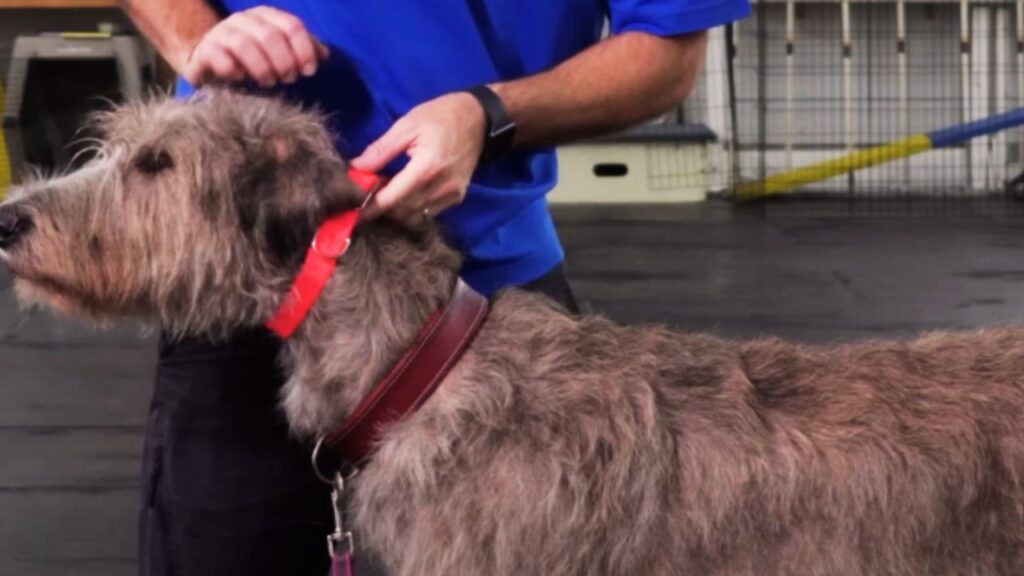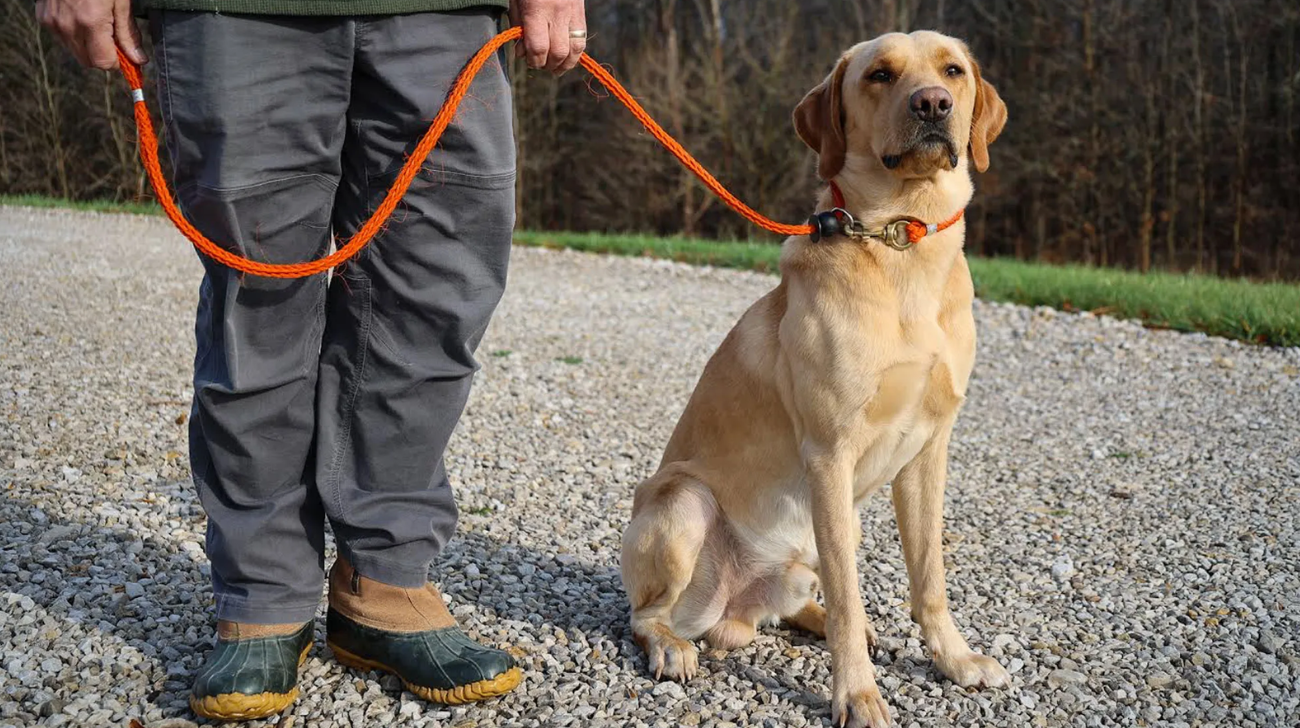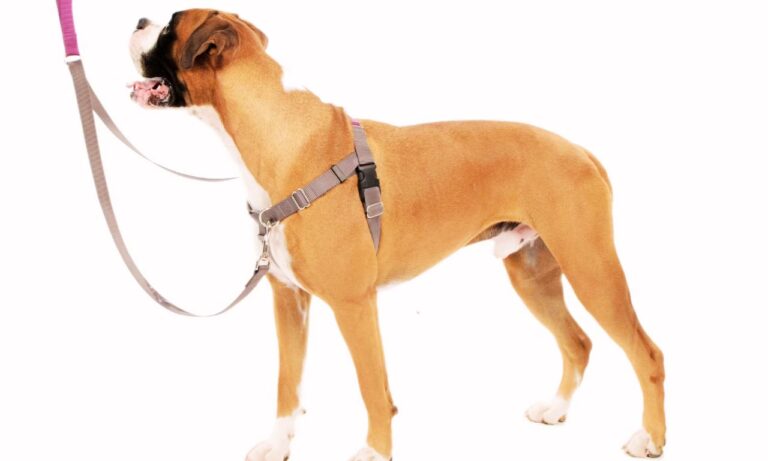Choosing the right collar is crucial for effective and humane dog training. With numerous collar types available, each offering distinct advantages and potential drawbacks, dog owners often find themselves overwhelmed. So, what type of collar is best for dog training?
Approximately 70% of dog trainers recommend specific collars based on the dog’s size, temperament, and training goals. This comprehensive guide explores the most effective collars for dog training, backed by numerical data and expert insights.
Learn more about the unique double-layered coat of an Anatolian Shepherd and how to care for it effectively.
Blog Highlights
ToggleWhat Type of Collar Is Best for Dog Training?
Selecting the optimal collar for dog training involves understanding the different types available and their specific applications. Here’s a concise overview:
1. Identification and Basic Control Benefits
Flat Collars: Flat collars are the most common type of dog collars, favored for their simplicity and functionality. They are ideal for basic control and identification purposes.

- Identification Tags: Flat collars allow for easy attachment of ID tags, which are essential for reuniting lost dogs with their owners. Studies indicate that over 80% of lost dogs wearing ID tags on flat collars are returned to their owners, compared to a 15% return rate for untagged dogs.
- Basic Control: Flat collars provide a straightforward method for controlling a dog during walks and training sessions. They are best suited for calm dogs that respond well to gentle guidance.
Visibility: Bright-colored flat collars can enhance a dog’s visibility during walks, especially in low-light conditions, increasing safety by up to 40%.
Control and Leash Attachment: Using a flat collar with a leash offers basic control, reducing the risk of dogs darting into traffic or unsafe areas by approximately 30%.
For insights on whether Pomeranians should wear a collar, including considerations for safety and alternatives, check out this informative article.
2. Enhanced Control with Martingale Collars
Martingale Collars: Also known as limited-slip collars, martingale collars are designed to provide additional control without choking the dog. They are particularly effective for training dogs that have a tendency to slip out of their collars.

- Non-Choking Design: Martingale collars tighten slightly when pulled but release to prevent choking, making them a safer alternative to choke chains.
- Training Efficiency: Approximately 75% of dog owners find martingale collars effective in reducing leash pulling without causing discomfort.
- Fit and Security: Martingales ensure a secure fit, which is crucial for training sessions that require close control.
Suitability: Martingale collars are ideal for medium to large dogs with narrow heads, providing better control without compromising the dog’s comfort.
Discover the perfect collar size for an Anatolian Shepherd Dog to ensure comfort and security for your furry friend.
3. Prong Collars: Effective but Controversial
Prong Collars: Prong collars, or pinch collars, consist of metal links that press into the dog’s neck when tension is applied. They are designed to mimic the natural correction a mother dog might give her puppies.

- Training Purpose: Prong collars are effective for correcting pulling behavior and teaching dogs to respond promptly to commands.
- Effectiveness: Studies show that prong collars can reduce pulling by up to 60% when used correctly by trained owners.
- Controversy: Despite their effectiveness, prong collars are controversial due to the potential for causing pain and injury. Approximately 30% of dog trainers advise against their use, recommending alternative methods instead.
Safety Concerns: Improper use of prong collars can lead to neck injuries, breathing difficulties, and increased anxiety in dogs. It is essential to receive professional training before using a prong collar.
For detailed guidance on selecting the correct collar size for a Belgian Shepherd, this article provides essential tips to ensure your dog’s comfort and safety.
4. Choke Chains: High Risk, Limited Use
Choke Chains: Choke chains are metal chains that tighten around a dog’s neck when pulled. They are one of the oldest types of training collars but are generally considered harsh.

- Correction-Based Training: Choke chains provide immediate feedback, making them effective for quick corrections. However, they can cause significant discomfort and pain.
- Effectiveness: While choke chains can be effective in reducing unwanted behaviors, their use is declining due to ethical concerns. Only about 5% of trainers still recommend choke chains as a training tool.
- Safety Risks: Choke chains carry a high risk of causing neck injuries, tracheal collapse, and increased aggression in dogs. They are generally not recommended for most training scenarios.
5. Harnesses: A Gentle Alternative for Effective Training
Harnesses: While not a collar, harnesses are often used in training as an alternative to neck-based collars. They distribute pressure across the dog’s chest and back, reducing strain on the neck.

- Comfort and Safety: Harnesses are highly comfortable and safe, especially for dogs with respiratory issues or neck sensitivities. They prevent choking and reduce the risk of neck injuries by up to 90%.
- Training Benefits: Harnesses are effective for training dogs that pull on the leash, providing better control without causing discomfort. Approximately 65% of dog owners report improved leash control using harnesses.
- Versatility: Harnesses are suitable for various training activities, including obedience training, walking, and agility.
For expert tips on how to fit a collar on a Belgian Shepherd, this guide offers simple steps to ensure your dog’s collar fits securely and comfortably.
6. Numeric Insights: Collar Usage and Training Effectiveness
7. Factors to Consider When Choosing a Training Collar
Dog’s Size and Breed: Larger breeds may require sturdier collars like martingales or prong collars, while smaller breeds often do well with flat collars or harnesses. For example, breeds like German Shepherds benefit from martingale collars due to their strong pulling tendencies.

Temperament: Calm and obedient dogs may respond well to flat collars, while high-energy or stubborn dogs might require more control, making martingale collars or harnesses more suitable.

Training Goals: Define your training objectives. For basic obedience, a flat or martingale collar may suffice. For addressing specific behaviors like excessive pulling, a prong collar or harness might be necessary.

Health Considerations: Dogs with respiratory issues, neck sensitivities, or tracheal problems should use harnesses to prevent strain and injury.

Comfort and Fit: Ensure the collar fits comfortably, allowing enough space to fit two fingers between the collar and the dog’s neck. Regularly check and adjust the fit as needed to maintain comfort and safety.

Discover the ideal fit by learning what size collar for Newfoundland dog to ensure your pet’s comfort and safety.
8. Best Practices for Using Training Collars
Proper Fit: An ill-fitting collar can cause discomfort and injury. Use the “two-finger rule” to ensure the collar is snug but not too tight.

Gradual Introduction: Introduce the collar gradually, allowing the dog to acclimate to the sensation. Use positive reinforcement to associate the collar with positive experiences.

Consistent Training: Consistency is key in training. Use the collar as part of a comprehensive training program that includes commands, rewards, and regular practice.

Avoid Overuse: Limit the use of correction-based collars like prong collars and choke chains to avoid causing stress or injury to your dog.

Professional Guidance: Seek advice from a professional dog trainer to ensure you are using the collar correctly and effectively.

Ensure your Newfoundland’s comfort and security with expert tips on how to ensure a safe collar fit for Newfoundland.
FAQs
1. Are prong collars humane for dog training?
Prong collars can be humane if used correctly and sparingly by trained individuals. However, due to the potential for pain and injury, many trainers recommend alternative methods like martingale collars or harnesses.
2. Can I use a flat collar for training my dog?
Yes, flat collars are suitable for basic training and control, especially for calm and well-behaved dogs. They are ideal for attaching ID tags and leashes during walks.
3. How do I choose the right size collar for my dog?
Measure your dog’s neck and choose a collar that allows for two fingers to fit comfortably between the collar and the neck. Adjust the collar as your dog grows or gains weight to ensure a proper fit.
4. Is a harness better than a collar for training?
Harnesses are often better for training dogs that pull or have neck sensitivities. They distribute pressure evenly across the chest and back, providing better control without causing neck strain.
5. How often should I check my dog’s collar fit?
Regularly check your dog’s collar fit, especially as they grow or gain weight. Ensure it remains snug but comfortable, and adjust as needed to prevent discomfort or injury.
Wrapping Up
Choosing the best collar for dog training is a decision that should be based on your dog’s specific needs, temperament, and training goals. While flat collars offer simplicity and ease of use, martingale collars provide enhanced control without the risks associated with prong collars and choke chains. Harnesses present a gentle yet effective alternative, especially for dogs with neck sensitivities or strong pulling tendencies.
Final Recommendations:
- Flat Collars are ideal for basic control and identification.
- Martingale Collars offer better control without choking, suitable for medium to large breeds.
- Prong Collars and Choke Chains should be used with caution, preferably under professional guidance.
- Harnesses are highly recommended for dogs that pull or have health considerations.
Ultimately, the best collar is one that ensures your dog’s safety, comfort, and effective training. By considering your dog’s unique characteristics and training needs, you can select a collar that enhances your training efforts and fosters a positive relationship with your furry friend.
Discover the perfect training collar for your dog by evaluating their specific needs and consulting with professional trainers. Ensure your dog’s comfort and training success with the right collar choice today! Hope so, now you know what type of collar is best for dog training.
For detailed guidance on ensuring the perfect collar fit for your St. Bernard, check out the Best Practices for St. Bernard Collar Adjustment to keep your dog comfortable and secure.








